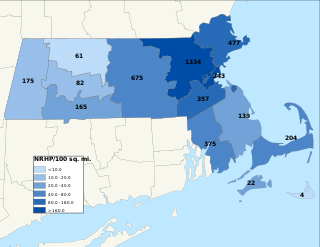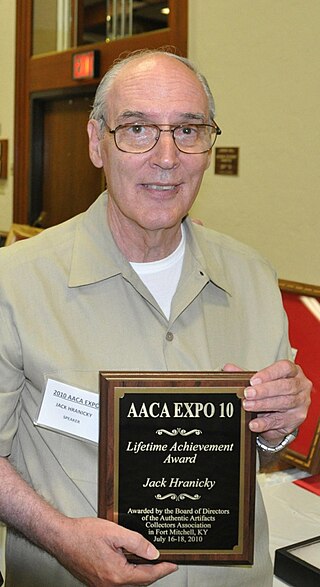
Industrial archaeology (IA) is the systematic study of material evidence associated with the industrial past. This evidence, collectively referred to as industrial heritage, includes buildings, machinery, artifacts, sites, infrastructure, documents and other items associated with the production, manufacture, extraction, transport or construction of a product or range of products. The field of industrial archaeology incorporates a range of disciplines including archaeology, architecture, construction, engineering, historic preservation, museology, technology, urban planning and other specialties, in order to piece together the history of past industrial activities. The scientific interpretation of material evidence is often necessary, as the written record of many industrial techniques is often incomplete or nonexistent. Industrial archaeology includes both the examination of standing structures and sites that must be studied by an excavation.

Frederic Ward Putnam was an American anthropologist and biologist.

The National Register of Historic Places is a United States federal official list of places and sites considered worthy of preservation. In the state of Massachusetts, there are over 4,300 listings, representing about 5% of all NRHP listings nationwide and the second-most of any U.S. state, behind only New York. Listings appear in all 14 Massachusetts counties.

The Stanfield-Worley Bluff Shelter, located on private property in Colbert County in northwestern Alabama, United States, is one of the most important prehistoric sites excavated in the state due to the archeological evidence deposited by the Paleo-Indians who once occupied the rock shelter. Lying in Sanderson Cove along a tributary of Cane Creek approximately seven miles (11 km) south of the Tennessee Valley, the shelter and the high bluffs of the surrounding valley provided a well-protected environment for the Native American occupants.

George Fletcher Bass was an American archaeologist. An early practitioner of underwater archaeology, he co-directed the first expedition to entirely excavate an ancient shipwreck at Cape Gelidonya in 1960 and founded the Institute of Nautical Archaeology in 1972.
Joseph Ralston Caldwell was an American archaeologist. In the late 1930s he conducted major excavations in the Savannah, Georgia area at the Irene site as part of Depression-era archaeology program. He also led excavations at other archaeology sites in Georgia, such as the Summerour Mound site in the early 1950s. He was among those conducting extensive excavations prior to the development of Lake Hartwell and Lake Strom Thurmond, which flooded numerous archeological sites.

The Madisonville site is a prehistoric archaeological site near Mariemont, Ohio, United States. It was listed on the National Register of Historic Places on October 16, 1974 as the "Mariemont Embankment and Village Site".
David G. Anderson is an archaeologist in the department of anthropology at the University of Tennessee, Knoxville, who specializes in Southeastern archaeology. His professional interests include climate change and human response, exploring the development of cultural complexity in Eastern North America, maintaining and improving the nation's Cultural Resource management (CRM) program, teaching and writing about archaeology, and developing technical and popular syntheses of archaeological research. He is the project director of the on-line Paleoindian Database of the Americas (PIDBA). and a co-director, with Joshua J. Wells, Eric C, Kansa, and Sarah Whitcher Kansa, of the Digital Index of North American Archaeology (DINAA)

Cedar Swamp Archeological District is a prehistoric and historic archaeologically sensitive area in eastern Westborough, Massachusetts, and extending into the northwest corner of Hopkinton. Cedar Swamp is an area of more than 2,600 acres (1,100 ha) of wetlands that include the headwaters area of the Sudbury River. Archeological surveys of the environmentally sensitive and critical area have identified many Native American sites of interest. It is believed that Native Americans prized wood from the cedar trees that grew in the area. The archeological district, which encompasses much of the Cedar Swamp area, was added to the National Register of Historic Places in 1988.
Barton Village Site, also known as the Herman Barton Indian Village Archeological Site, is a large, multi-component archaeological site near Cumberland in Allegany County, Maryland.
Ripley Pierce Bullen (1902–1976) was Curator Emeritus at the Florida Museum of Natural History at the University of Florida, where he was the Department Chair of Social Sciences for a period of seventeen years (1956–1973). He was an archaeologist primarily associated with the Southeastern United States and Florida, and in his later years he was known as the "dean of Floridian archaeology". He also completed fieldwork in the American Southwest, the New England states, Central America, and the Greater and Lesser Antilles.

Jack Hranicky is a Registered Professional Archaeologist (RPA). During his forty-year career his scholarship has focused on the Paleo-Indian period and, in particular, stone tools and rock art. He has published more than 200 scholarly papers and 32 books, including a two-volume, 800-page survey of the material culture of Virginia. He is the webmaster of www.bipoints.com, which is a site on American early prehistory.
C. Malcolm Watkins (1911–2001) was an American historian, archaeologist, and curator. He researched early American material culture, with a specific interest in the decorative arts. Watkins served as a head curator of the Department of Cultural History at the National Museum of American History at the Smithsonian Institution in Washington, D.C. He spent a total of 31 years working at the Smithsonian.

Samuel Forster Haven was an American archeologist and anthropologist.
The Sims site (16SC2), also known as Sims Place site, is an archaeological site located in Saint Charles Parish, Louisiana, near the town of Paradis. The location is a multi-component mound and village complex with platform mounds and extensive midden deposits. The site habitations are divided into three periods. It was first inhabited about 800 CE by peoples of the Coastal Coles Creek culture. By 1100 CE the culture of the site had transitioned into the Mississippianized Plaquemine culture that lasted until 1450 CE. A little later was a Late Mississippian/protohistoric period that lasted from 1500 until about 1700 or 1800.
María del Pilar Luna Erreguerena was a Mexican underwater archaeologist, pioneer in the field of archaeology, who founded the Division of Underwater Archaeology of the National Institute of Anthropology and History (INAH). She was awarded her undergraduate degree by the National School of Anthropology and History and the National Autonomous University of Mexico (UNAM), from which she then obtained her master's degree in Anthropological Sciences.

ESAF Small Finance Bank is an Indian small finance bank headquartered in Thrissur, Kerala, providing banking services and small loans to the underbanked. Having started its operations as an NGO in 1992 under the name of Evangelical Social Action Forum, ESAF Microfinance was a non-banking finance company and microfinance institution (NBFC-MFI), licensed by the Reserve Bank of India (RBI). It became a small finance bank in March 2017 and started operating in January 2018.
The Eastern States Archeological Federation is an archaeological society that was founded in 1933. Its member societies represent the Eastern United States and Canada. It has published a Bulletin since 1941 and an annual journal, Archaeology of Eastern North America, since 1973.
The Archaeological Society of Delaware is an archaeological society founded in 1933 to study the archaeology of Delaware in the United States and the surrounding region. It is a member of the Eastern States Archeological Federation. It publishes an annual scholarly journal, the Bulletin, past copies of which are available without subscription on the society's website.











